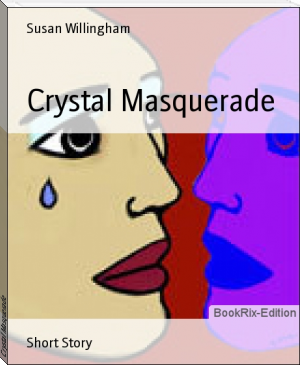The Book of Dreams and Ghosts by Andrew Lang (inspirational books TXT) 📖

- Author: Andrew Lang
- Performer: -
Book online «The Book of Dreams and Ghosts by Andrew Lang (inspirational books TXT) 📖». Author Andrew Lang
{39a} S.P.R., v., 324.
{39b} Ibid., 324.
{42} Proceedings of the Society for Psychical Research, vol. v., pp. 324, 325.
{43} Proceedings, S.P.R., vol. xi., p. 495.
{45a} Signed by Mr. Cooper and the Duchess of Hamilton.
{45b} See Galton, Inquiries into Human Faculty, p. 91.
{48} Proceedings, S.P.R., vol. xi., p. 522.
{50} The case was reported in the Herald (Dubuque) for 12th February, 1891. It was confirmed by Mr. Hoffman, by Mr. George Brown and by Miss Conley, examined by the Rev. Mr. Crum, of Dubuque.—Proceedings, S.P.R., viii., 200-205. Pat Conley, too, corroborated, and had no theory of explanation. That the girl knew beforehand of the dollars is conceivable, but she did not know of the change of clothes.
{56a} Told by the nobleman in question to the author.
{56b} The author knows some eight cases among his friends of a solitary meaningless hallucination like this.
{58} As to the fact of such visions, I have so often seen crystal gazing, and heard the pictures described by persons whose word I could not doubt, men and women of unblemished character, free from superstition, that I am obliged to believe in the fact as a real though hallucinatory experience. Mr. Clodd attributes it to disorder of the liver. If no more were needed I could “scry” famously!
{60a} Facts attested and signed by Mr. Baillie and Miss Preston.
{60b} Story told to me by both my friends and the secretary.
{62} Mémoires, v., 120. Paris, 1829.
{66} Readers curious in crystal-gazing will find an interesting sketch of the history of the practice, with many modern instances, in Proceedings, S.P.R., vol. v., p. 486, by “Miss X.”. There are also experiments by Lord Stanhope and Dr. Gregory in Gregory’s Letters on Animal Magnetism, p. 370 (1851). It is said that, as sights may be seen in a glass ball, so articulate voices, by a similar illusion, can be heard in a sea shell, when
“It remembers its august abodes,
And murmurs as the ocean murmurs there”.
{68} A set of scientific men, as Lélut and Lombroso, seem to think that a hallucination stamps a man as mad. Napoleon, Socrates, Pascal, Jeanne d’Arc, Luther were all lunatics. They had lucid intervals of considerable duration, and the belief in their lunacy is peculiar to a small school of writers.
{69a} A crowd of phantom coaches will be found in Messrs. Myers and Gurney’s Phantasms of the Living.
{69b} See The Slaying of Sergeant Davies of Guise’s.
{70} Principles of Psychology, by Prof. James of Harvard, vol. ii., p. 612. Charcot is one of sixteen witnesses cited for the fact.
{74} Story written by General Barter, 28th April, 1888. (S.P.R.) Corroborated by Mrs. Barter and Mr. Stewart, to whom General Barter told his adventure at the time.
{75} Statement by Mr. F. G., confirmed by his father and brother, who were present when he told his tale first, in St. Louis. S.P.R. Proceedings, vol. vi., p. 17.
{76} S.P.R., viii., p. 178.
{77} Mrs. M. sent the memorandum to the S.P.R. “March 13, 1886. Have just seen visions on lawn—a soldier in general’s uniform, a young lady kneeling to him, 11.40 p.m.”
{78} S.P.R., viii., p. 178. The real names are intentionally reserved.
{80a} Corroborated by Mr. Elliot. Mrs. Elliot nearly fainted. S.P.R., viii., 344-345.
{80b} Oddly enough, maniacs have many more hallucinations of hearing than of sight. In sane people the reverse is the case.
{82} Anecdote by the lady. Boston Budget, 31st August, 1890. S.P.R., viii., 345.
{85a} Tom Sawyer, Detective.
{85b} Phantasms of the Living, by Gurney and Myers.
{85c} The story is given by Mr. Mountford, one of the seers.
{86} Journal of Medical Science, April, 1880, p. 151.
{88} Catholic theology recognises, under the name of “Bilocation,” the appearance of a person in one place when he is really in another.
{91a} Phantasms, ii., pp. 671-677.
{91b} Phantasms of the Living.
{91c} Mr. E. B. Tylor gives a Maori case in Primitive Culture. Another is in Phantasms, ii., 557. See also Polack’s New Zealand for the prevalence of the belief.
{92} Gurney, Phantasms, ii., 6.
{93} The late Surgeon-Major Armand Leslie, who was killed at the battle of El Teb, communicated the following story to the Daily Telegraph in the autumn of 1881, attesting it with his signature.
{95a} This is a remarkably difficult story to believe. “The morning bright and calm” is lit by the rays of the moon. The woman (a Mrs. Gamp) must have rushed past Dr. Leslie. A man who died in Greece or Russia “that morning” would hardly be arrayed in evening dress for burial before 4 a.m. The custom of using goloshes as “hell-shoes” (fastened on the Icelandic dead in the Sagas) needs confirmation. Men are seldom buried in eye-glasses—never in tall white hats.—Phantasms of the Living, ii., 252.
{95b} From a memorandum, made by General Birch Reynardson, of an oral communication made to him by Sir John Sherbrooke, one of the two seers.
{101} This is an old, but good story. The Rev. Thomas Tilson, minister (non-conforming) of Aylesford, in Kent, sent it on 6th July, 1691, to Baxter for his Certainty of the World of Spirits. The woman Mary Goffe died on 4th June, 1691. Mr. Tilson’s informants were her father, speaking on the day after her burial; the nurse, with two corroborative neighbours, on 2nd July; the mother of Mary Goffe; the minister who attended her, and one woman who sat up with her—all “sober intelligent persons”. Not many stories have such good evidence in their favour.
{103} Phantasms, ii., 528.
{111} “That which was published in May, 1683, concerning the Daemon, or Daemons of Spraiton was the extract of a letter from T. C., Esquire, a near neighbour to the place; and though it needed little confirmation further than the credit that the learning and quality of that gentleman had stampt upon it, yet was much of it likewise known to and related by the Reverend Minister of Barnstaple, of the vicinity to Spraiton. Having likewise since had fresh testimonials of the veracity of that relation, and it being at first designed to fill this place, I have thought it not amiss (for the strangeness of it) to print it here a second time, exactly as I had transcribed it then.”—BOVET.
{118} Shchapoff case of “The Dancing Devil” and “The Great Amherst Mystery”.
{121} Additional MSS., British Museum, 27,402, f. 132.
{122} Really 1628, unless, indeed, the long-continued appearances began in the year before Buckingham’s death; old style.
{127} It may fairly be argued, granting the ghost, his advice and his knowledge of a secret known to the countess, that he was a hallucination unconsciously wired on to old Towse by the mind of the anxious countess herself!
{129a} Hamilton’s Memoirs.
{129b} Mrs. Thrale’s Diary, 28th November, 1779.
{129c} Diary of Lady Mary Coke, 30th November, 1779.
{130a} See Phantasms, ii., 586.
{130b} The difficulty of knowing whether one is awake or asleep, just about the moment of entering or leaving sleep is notorious. The author, on awaking in a perfectly dark room, has occasionally seen it in a dim light, and has even been aware, or seemed to be aware, of the pattern of the wall paper. In a few moments this effect of light disappears, and all is darkness. This is the confused mental state technically styled “Borderland,” a haunt of ghosts, who are really flitting dreams.
{131} Life of Lockhart.
{132} The author has given authorities in Blackwood’s Magazine March, 1895. A Mr. Coulton (not Croker as erroneously stated) published in the Quarterly Review, No. 179, an article to prove that Lyttelton committed suicide, and was Junius. See also the author’s Life of Lockhart.
{140} A prominent name among the witnesses at the trial.
{141} The report of the trial in the Scots Magazine of June, 1754 (magazines appeared at the end of the month), adds nothing of interest. The trial lasted from 7 a.m. of June 11 till 6 a.m. of June 14. The jury deliberated for two hours before arriving at a verdict.
{142} Sydney, no date.
{144} Phantasms, ii., 586, quoting (apparently) the Buckingham Gazette of the period.
{145a} Oddly enough a Mr. William Soutar, of Blairgowrie, tells a ghost story of his own to the S.P.R.!
{145b} I put them for convenience at the foot.—W. L. L.
{146a} The dogs in all these towns (farms) of Mause are very well accustomed with hunting the fox.
{146b} Blair (Blairgowrie) is the kirk-town of that parish, where there is also a weekly market: it lies about a mile below Middle Mause on the same side of the river.
{146c} Knockhead is within less than half a mile of Middle Mause, and the Hilltown lies betwixt the two. We see both of them from our window of Craighall House.
{148a} This George Soutar died about two or three years ago, and was very well known to William.
{148b} The Isle is a spot of ground in the wood of Rychalzie, about a mile above Middle Mause, on the same side of the river.
{149a} Glasclune is a gentleman of the name of Blair, whose house lies about three-quarters of a mile south-west from Middle Mause.
{149b} He said the voice answered him as if it had been some distance without the door.
{150} Besides the length of time since the murder was committed, there is another reason why all the bones were not found, viz., that there is a little burn or brook which had run for the space of twenty years, at least, across upon the place when the bones were found, and would have carried them all away had it not been that the bush, at the side of which they were buried, had turned the force of the stream a little from off that place where they lay, for they were not more than a foot, or at most a foot and a half, under ground, and it is only within these three years that a water-spate has altered the course of the burn.
{151} The course of the river (the Ericht) is from north to south. Middle Mause lies on the west side of it, and Craighall on the east.
{155a} With reference to the last statement in Mr. Newton’s notes see the Journal of Sir Walter Scott (edit., 1891, p. 210) under date 13th June, 1826.
{155b} L’Homme Posthume.
{155c} Denny’s Folklore of China.
{156} Story received in a letter from Lieutenant --- of H.M.S gunboat ---.
{157} He fought at Culloden, of course for King George, and was
 If you are looking for a good book horror, you should visit our website. Electronic library is gaining popularity. Influenced by modern technology and the advent of new gadgets, people are increasingly turning to electronic libraries because it allows them to read online everywhere . Every reader thanks to his smartphone, laptop or computer, can visit our website at any time. Reading ebooks help people to make good use of free time. Our elibrary has a huge selection of genres for every taste and request.
If you are looking for a good book horror, you should visit our website. Electronic library is gaining popularity. Influenced by modern technology and the advent of new gadgets, people are increasingly turning to electronic libraries because it allows them to read online everywhere . Every reader thanks to his smartphone, laptop or computer, can visit our website at any time. Reading ebooks help people to make good use of free time. Our elibrary has a huge selection of genres for every taste and request.




Comments (0)